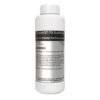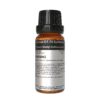Aerosol OT-75 Surfactant (Sodium Dioctyl Sulfosuccinate)
$12.00 – $17.00
Chemical Identity
- Chemical Name: Sodium Dioctyl Sulfosuccinate
- Common Name: Aerosol OT-75
- Chemical Formula: C₁₆H₂₉NaO₄S
- Molecular Weight: 346.45 g/mol
- CAS Number: 577-11-7
Physical Properties
- Form: Clear to slightly yellow, viscous liquid
- Active Content: 75% sodium dioctyl sulfosuccinate
- Solvent System: Water and alcohol (typically ethanol)
- Density: ~1.06 g/cm³ at 25°C
- pH: 5.0–7.0 (1% solution)
- Flash Point: ~29°C (84°F)
- Surface Tension: ~27 dynes/cm at 0.1% concentration
- Viscosity: 200–400 mPa·s at 25°C
- Boiling Point: Dependent on solvent system; generally >100°C (212°F)
Chemical Properties
- Type: Anionic surfactant
- Solubility: Soluble in water and alcohol
- Stability:
- Stable under normal conditions.
- Avoid exposure to strong oxidizing agents or acids.
Description
Aerosol OT-75 Surfactant is a highly efficient anionic surfactant made from sodium dioctyl sulfosuccinate. Known for its superior wetting, dispersing, and emulsifying capabilities, it is widely used in various industrial and laboratory applications. Its high-performance properties make it an essential component in formulations for textiles, agriculture, personal care, and coatings. Manufactured to meet stringent quality standards, each 1 kg container is securely packaged and clearly labeled with all relevant safety information.
Applications for Aerosol OT-75 Surfactant:
Industrial Applications
- Textile Industry:
- Acts as a wetting agent to enhance dye penetration and improve fabric processing.
- Used in textile scouring, dye leveling, and fiber lubrication.
- Agriculture:
- Incorporated in pesticide and herbicide formulations to improve spreading and adhesion on plant surfaces.
- Facilitates better penetration of active ingredients.
- Metalworking Fluids:
- Functions as a dispersant and lubricant in metalworking fluids.
- Improves emulsification in oil-water systems, enhancing cooling and lubrication.
- Paints and Coatings:
- Stabilizes emulsions in paints, varnishes, and coatings.
- Reduces surface tension for uniform application and improved flow.
Personal Care and Cosmetics
- Shampoos and Conditioners:
- Acts as an emulsifier to ensure uniform distribution of ingredients.
- Lotions and Creams:
- Stabilizes emulsions and improves product texture.
Laboratory and Research
- Analytical Chemistry:
- Used in chromatography and other analytical techniques requiring surfactants.
- Emulsion Polymerization:
- Functions as an emulsifying agent in the synthesis of latex and polymers.
Environmental Applications
- Oil Spill Dispersants:
- Acts as a surfactant in formulations to break oil into smaller droplets for easier degradation.
- Cleaning Solutions:
- Used in industrial and household cleaning agents to enhance the solubilization of oily and greasy soils.
Food and Pharmaceutical Applications
- Pharmaceutical Formulations:
- Used as an excipient for emulsification and dispersion in drug formulations.
- Food Additive:
- May be used in certain food-grade applications where surfactants are required (ensure food-grade certification).
Key Benefits in Applications:
- Reduces surface tension, promoting better wetting, spreading, and emulsification.
- High stability across a range of temperatures and pH levels.
- Suitable for use in water and oil-based systems.
Storage Guidelines
- Storage Conditions:
- Store in a cool, dry, and well-ventilated area.
- Avoid exposure to direct sunlight, heat, or open flames.
- Keep the storage temperature between 15°C and 30°C (59°F to 86°F) to maintain product stability.
- Container Requirements:
- Use tightly sealed, chemical-resistant containers to prevent moisture absorption and contamination.
- Ensure containers are properly labeled with product and hazard information.
- Segregation:
- Keep away from strong oxidizing agents and acids to avoid potential reactions.
- Store separately from food, beverages, and incompatible materials.
Handling Guidelines
- Personal Protective Equipment (PPE):
- Wear chemical-resistant gloves, safety goggles, and appropriate protective clothing to minimize contact.
- Use a respirator if handling large quantities in poorly ventilated areas.
- Work Area:
- Handle in a well-ventilated area or under a fume hood to prevent inhalation of fumes or vapors.
- Avoid creating dust or aerosols during handling.
- Safe Handling Practices:
- Avoid direct contact with the skin, eyes, or clothing.
- Do not eat, drink, or smoke while handling the product.
- Wash hands thoroughly after handling.
- Spill Response:
- For small spills, use inert absorbent materials such as sand, vermiculite, or paper towels.
- For larger spills, ventilate the area, contain the spill, and follow your organization’s spill response protocol.
Additional information
| Size | 30mL (1 Fl Oz), 100mL (3.3 Fl Oz) |
|---|
Related products
-
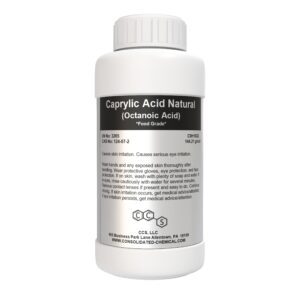
Caprylic Acid Natural (Octanoic Acid) | Food Grade
$12.00 – $32.00 Select options This product has multiple variants. The options may be chosen on the product page -
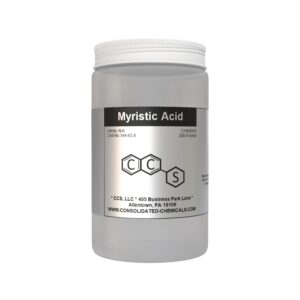
Myristic Acid – High-Purity Fatty Acid
$14.00 – $34.00 Select options This product has multiple variants. The options may be chosen on the product page -
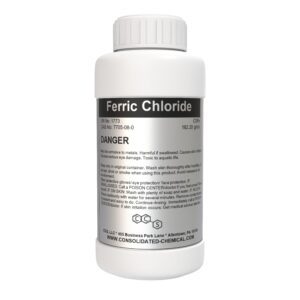
Ferric Chloride Solution Liquid Etchant
$14.00 – $200.00 Select options This product has multiple variants. The options may be chosen on the product page -
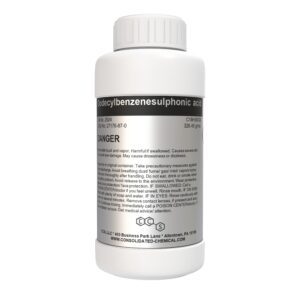
Dodecylbenzenesulfonic Acid (DBSA) – Industrial Surfactant
$14.99 – $39.99 Select options This product has multiple variants. The options may be chosen on the product page
SKU: N/A
Category: Surfactants (12)
Tags: Aerosol OT for formulations, Aerosol OT-75, aerosol ot-75 agrochemicals, aerosol ot-75 alternative surfactants, aerosol ot-75 anionic surfactant, aerosol ot-75 applications, aerosol ot-75 biodegradability, aerosol ot-75 bulk, aerosol ot-75 CAS 577-11-7, aerosol ot-75 chemical compatibility, aerosol ot-75 chemical formula, aerosol ot-75 chemical industry trends, aerosol ot-75 chemical intermediate, aerosol ot-75 cleaning industry, aerosol ot-75 cleaning products, aerosol ot-75 coatings and adhesives, aerosol ot-75 coatings industry, aerosol ot-75 corrosion inhibitors, aerosol ot-75 defoamer, aerosol ot-75 demand, aerosol ot-75 density, aerosol ot-75 detergent, aerosol ot-75 detergent formulation, aerosol ot-75 dispersant, aerosol ot-75 dispersion stability, aerosol ot-75 distributor, aerosol ot-75 emulsification, aerosol ot-75 emulsifier, aerosol ot-75 environmental impact, aerosol ot-75 export, aerosol ot-75 flotation agent, aerosol ot-75 foaming agent, aerosol ot-75 foaming properties, aerosol ot-75 food grade, aerosol ot-75 for sale, aerosol ot-75 foundry applications, aerosol ot-75 global market, aerosol ot-75 handling, aerosol ot-75 hazards, aerosol ot-75 high purity, aerosol ot-75 hydrophilic-lipophilic balance, aerosol ot-75 import, aerosol ot-75 in cosmetics, aerosol ot-75 in metalworking fluids, aerosol ot-75 in personal care, aerosol ot-75 in pharmaceuticals, aerosol ot-75 industrial applications, aerosol ot-75 industrial detergents, aerosol ot-75 industrial grade, aerosol ot-75 industrial surfactants, aerosol ot-75 lab reagent, aerosol ot-75 logistics, aerosol ot-75 lubricant additives, aerosol ot-75 manufacturer, aerosol ot-75 molecular weight, aerosol ot-75 MSDS, aerosol ot-75 near me, aerosol ot-75 oil and gas, aerosol ot-75 organic synthesis, aerosol ot-75 packaging, aerosol ot-75 personal care formulations, aerosol ot-75 pH, aerosol ot-75 pharma grade, aerosol ot-75 plastic additives, aerosol ot-75 polymer industry, aerosol ot-75 price, aerosol ot-75 production process, aerosol ot-75 renewable chemicals, aerosol ot-75 safety data sheet, aerosol ot-75 sodium dioctyl sulfosuccinate, aerosol ot-75 solubility, aerosol ot-75 solubilizer, aerosol ot-75 specialty chemicals, aerosol ot-75 specialty surfactants, aerosol ot-75 stabilizer, aerosol ot-75 storage, aerosol ot-75 supplier, aerosol ot-75 supply chain, aerosol ot-75 surface tension reducer, aerosol ot-75 surfactant, aerosol ot-75 surfactant properties, aerosol ot-75 synthesis, aerosol ot-75 technical grade, aerosol ot-75 textile industry, aerosol ot-75 textile processing, aerosol ot-75 toxicity, aerosol ot-75 trade, aerosol ot-75 uses, aerosol ot-75 viscosity, aerosol ot-75 water treatment, aerosol ot-75 wetting agent, aerosol ot-75 wetting properties, aerosol ot-75 wholesale, Anionic surface-active agent, Anionic surfactant, buy aerosol ot-75, CAS 577-11-7, Dispersing agent for coatings, Emulsifying Agent, High-performance surfactant, Industrial emulsifier, Industrial-grade wetting agent, Laboratory-grade surfactant, OT-75 surfactant, Sodium Dioctyl Sulfosuccinate, Surfactant chemical reagent, Surfactant for agriculture, Surfactant for metalworking fluids, Surfactant for personal care, Surfactant for textiles, Wetting agent for industrial applications




